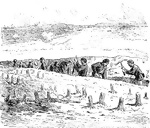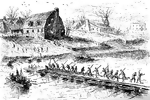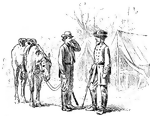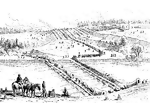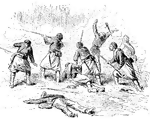
Coat of Arms
Coat of arms for the French Republic and Imperial Arms of France. France is the most western portion…

Artillery Battery
During early wars, like the Civil War, artillery battery was a term for a unit of guns or mortars used…

Gaine's Mill
Soldiers capturing a cannon. Depiction of the Battle of Gaine's Mill during the Civil War. It was the…
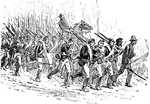
Irish Brigade
"The Irish Brigade to the Rescue." The Irish Brigade was an infantry brigade made up of mainly Irish…

Gunboats
Gunboats in the James River off the Virginia coast. Gunboats were boats used for carrying one or more…

Lincoln Review
In 1863, president Lincoln reviewed some sixty thousand troops in the small town of Falmouth VA. Although…

March to Chancellorsville
Soldiers marching to Chancellorsville Virginia. The Battle of Chancellorsville was a seven day battle…
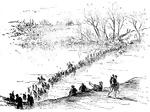
Ely's Ford
Civil War soldiers crossing Ely's Ford and the Rapidan river. Ely's Ford was a major battle of the river.…

Rappahannock River
American soldiers retreating across the Rappahannock river in Northwest Virginia. It shows an example…
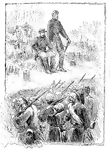
Civil War Generals
Soldiers passing Generals Grant (left) and George Meade (right). Meade is best known for defeating Robert…

Fort Steadman
The Battle of Fort Steadman was one of the Confederacy's last attempts to besiege Petersburg, Virginia.…
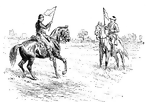
Flag of Truce
Civil War soldiers waving the flag of truce, signaling a halt in fighting for both sides.

Puma
The puma, also known as the cougar, panther, or mountain lion (Felis concolor) , is a large American…

Visigoths, Under the Rule of Alaric, on the March after Sacking Rome
Illustration of a great multitude of Visigoth warriors, along with the booty they had taken from Rome,…

The Siege of Château Gaillard, the Saucy Castle of Richard the Lionheart - Aerial View
An aerial view of the siege of Château Gaillard, also called the Saucy Castle. Construction of the…

Prickly Saltwort
Salsola kali. This plant is also called a Russian Thistle, Prickly Glasswort, Tumbleweed, and Glasswort.…
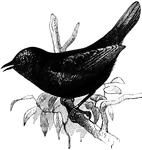
Magellanic Tapaculo
Scytalopus magellanicus. "A genus of South American formicarioid passerine birds, of the family Pteroptochidae.…

Spectacled Bear
Tremarctos ornatus. "The only South American bear, having a light-colored mark on the face, like a pair…
